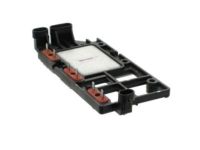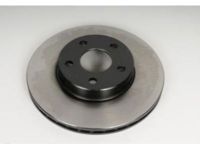
Why choose GMPartsGiant
- Large Inventory
The excellent site to buy genuine parts for years has been GMPartsGiant.com. We're the optimal online parts and accessory store for your Chevrolet Beretta. GMPartsGiant.com offers a large parts and accessory inventory to cover all your vehicle's repairs. Feel free to browse through our genuine Chevrolet Beretta parts and accessory catalog to find all your vehicle's needs.
- Fast Shipping Times
All of our Chevrolet Beretta parts and accessories are expedited directly from verified dealers and backed by the manufacturer's warranty. Our experienced team ensures the orders are packed to provide quick transit times. The majority of the orders are shipped out within a couple of business days to get the parts out to you as fast as possible.
- Low Prices
Our low prices say it all. You can rest assured that you will always receive unbeatable prices on OEM Chevrolet Beretta parts. Our giant inventory is beyond compare and has everything you need at an extraordinary value not found anywhere else. Whether you're restoring an old vehicle or upgrading the performance of your Chevrolet Beretta, you can count on the quality of our products without hurting your bank account.
Popular Genuine Chevrolet Beretta Parts
- Engine Parts View More >
- Front Suspension, Steering Parts View More >
- Fuel System, Exhaust, Emission System Parts View More >
- Brakes Parts View More >
- Transmission - Automatic Parts View More >
- Frames, Springs, Shocks, Bumpers Parts View More >
- Cooling System, Grille, Oil System Parts View More >
- Interior Trim, Front Seat Trim, Seat Belts Parts View More >
Shop Genuine Chevrolet Beretta Parts with GMPartsGiant.com
The Chevrolet Beretta, a two-door, front-wheel-drive coupe, was produced by Chevrolet between 1987 and 1996. Manufactured in Wilmington, Delaware and Linden, New Jersey, the Beretta came in various versions: Base, CL, GT, GTU, Indy, GTZ, and Z26. It was a notable pace car in the 1990 Indianapolis 500. The Beretta base model featured a 2.2L OHV four-cylinder engine paired with either a three-speed automatic transmission or a 60-horsepower V6, while a five-speed manual transmission was available as an option with the 2.2L petrol engine. With its engine positioned above the drive wheels, the Beretta offered improved traction, making it ideal for varied conditions such as snow, mud, gravel, or wet surfaces. Its front-wheel-drive layout was considered superior to rear-wheel-drive configurations in terms of handling, especially in low-grip conditions. The Beretta saw improvements in its engine models, with the L82 replacing the MPFI LH0 between 1993 and 1999, delivering an increased output of 160 hp at 5,200 rpm and 185 lb-ft at 4,000 rpm. The LG8, another improved version of the 3.1L engine, featured an iron block, twin-valve aluminum pistons, sequential fuel injection, a new intake manifold, and modifications for better interchangeability with the larger LA1 3400. As a C-segment car, the Chevrolet Beretta offered a balance between generous interior space and compact exterior dimensions, embodying the quintessence of a 'medium-sized car'.
As with all vehicles, the Chevrolet Beretta may exhibit common problems over time, which, if not addressed, can reduce its lifespan. Firstly, it may stall while driving, a particularly troublesome issue during emergencies. Signs include dirt, grime, and carbon deposits found inside the housing, poor or high idle, and vacuum leaks. This suggests that a thorough inspection of the engine and related components, such as the camshaft, throttle body, and spark plug, is necessary. Secondly, Beretta owners often report suspension failure, manifested as sluggish handling, rattling or clunking noises from under the vehicle, a noticeable squeaking sound when driving over bumps or making aggressive turns, excessive damage to the front tires and brakes, and eventual bottoming out. These symptoms may indicate the need for a comprehensive inspection of the sway bar bushing or coil spring insulator. Additionally, maintaining easily overlooked components like seat belts, windshield wipers, and headlights is crucial for extending the vehicle's service life.
In terms of quality, OEM parts are the wise choice for Chevrolet owners who want to keep their vehicles at peak performance. They are manufactured to follow official strict factory specifications and are made in world-class facilities. They undergo rigorous tests to ensure that they are durable and safe to use. With our website's selection of OEM Chevrolet Beretta parts, like Front End Sheet Metal, Heater, Body Moldings, Sheet Metal, Rear Compartment Hardware, Roof Hardware, you can fulfill your need for quality while adhering to your budget. All our genuine Chevrolet Beretta parts, such as Transmission - Manual are affordably priced and come with a manufacturer's warranty, ensuring you get the best value for your money.
Chevrolet Beretta Parts Questions & Answers
- Q: How to remove and install the Ignition Coil and Ignition Control Module assembly on Chevrolet Beretta?A: To remove and install the ignition coils and ignition control module assembly, first disconnect the battery's negative terminal. If needed, remove the cooling fan for access. Unplug the module's electrical connectors and label and detach the coil wires. Remove the assembly bolts and lift it out. Separate the coils from the ignition control module by removing their bolts. If removing the ignition system assembly, disconnect the IOI harness, remove assembly-to-camshaft bolts, lift it off, and detach the housing. Disconnect coil harnesses, remove coils, and then remove the ignition control module from the cover using screws. Reinstall in the reverse order.
- Q: How to replace brake discs on Chevrolet Beretta?A: Loosen the wheel lug nuts, raise the front of the vehicle and support it securely on jackstands. Apply the parking brake and block the rear wheels to keep the vehicle from rolling off the jackstands. Remove the wheel and install two lug nuts to hold the brake disc in place. Remove the brake caliper, suspending it out of the way with a piece of wire. Visually inspect the brake disc surface for score marks and other damage. Deep score marks require brake disc removal and refinishing. Check brake disc runout with a dial indicator, ensuring it does not exceed the specified limit. Refinish the brake discs to impart a smooth finish and ensure flat brake pad surfaces. Never machine the brake disc to a thickness less than the specified minimum allowable refinish thickness. Remove the lug nuts holding the brake disc in place and remove the brake disc from the hub. Place the brake disc in position over the threaded studs. Install the caliper and brake pad assembly over the brake disc and tighten the caliper bolts to the specified torque. Install the wheel, lower the vehicle, and depress the brake pedal to bring the brake pads into contact with the brake disc. Check the operation of the brakes before driving the vehicle.


















































